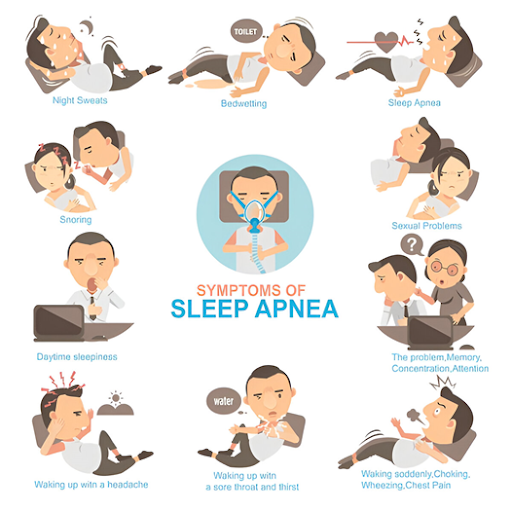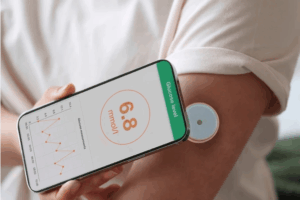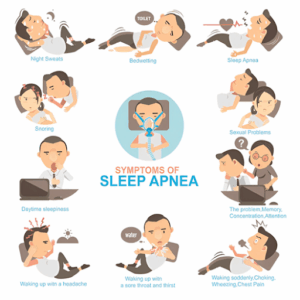
Imagine waking up feeling fresh, energized, and focused. For millions suffering from obstructive sleep apnea (OSA), this simple dream feels out of reach. Interrupted sleep, loud snoring, gasping for air, and constant fatigue can turn nights into nightmares and days into a struggle.
But there is a solution—CPAP therapy. Often underestimated, Continuous Positive Airway Pressure (CPAP) machines have silently transformed the lives of sleep apnea patients around the world. In this article, we’ll explore what a CPAP machine is, how it works, its life-changing benefits, and what every user should know.
What Is a CPAP Machine?
A CPAP machine is a medical device used to treat sleep apnea, a condition where a person’s airway becomes blocked repeatedly during sleep, leading to pauses in breathing. These pauses, called apnea events, can last for seconds or even minutes and occur multiple times an hour. Over time, this can reduce oxygen levels, strain the heart, and leave the person feeling exhausted, irritable, and foggy-headed.
The CPAP machine solves this by delivering a steady stream of air through a mask that keeps the airway open all night. It’s a non-invasive, safe, and highly effective treatment for sleep apnea.
Understanding Obstructive Sleep Apnea (OSA)
Before diving deeper into how CPAP works, it’s important to understand OSA, the most common type of sleep apnea. In OSA:
- The muscles at the back of the throat relax excessively during sleep.
- This relaxation causes the airway to narrow or close completely.
- As a result, breathing temporarily stops, and the brain jolts the body awake to reopen the airway.
This cycle repeats throughout the night, leading to disturbed, poor-quality sleep.
Common symptoms of OSA include:
- Loud snoring
- Waking up choking or gasping
- Morning headaches
- Dry mouth or sore throat
- Excessive daytime sleepiness
- Difficulty concentrating
- Irritability or depression
Left untreated, sleep apnea can increase the risk of heart disease, stroke, high blood pressure, diabetes, and accidents due to daytime drowsiness.
How Does a CPAP Machine Work?
The core principle of a CPAP machine is simple: continuous air pressure.
When you sleep, the CPAP machine gently blows air through a mask into your airways. This air acts like a pneumatic splint, keeping the upper airway open and preventing it from collapsing. This ensures that:
- Your breathing remains steady and uninterrupted.
- Your body gets a consistent supply of oxygen.
- You stay in deep, restorative stages of sleep longer.
The pressure settings on a CPAP machine are typically determined after a sleep study or titration test, where a sleep specialist finds the exact amount of air pressure needed to keep your airway open.
Main Components of a CPAP System
A typical CPAP system includes:
- CPAP Device – This is the base unit that generates the airflow and allows pressure settings to be adjusted.
- Tubing – A flexible hose that connects the machine to the mask, delivering pressurized air.
- Mask – Available in different styles:
- Nasal mask (covers the nose)
- Nasal pillows (fit into the nostrils)
- Full-face mask (covers nose and mouth)
- Humidifier (optional) – Adds moisture to the air and prevents dryness or irritation in the nose and throat.
Benefits of Using a CPAP Machine
Using a CPAP machine may require an adjustment period, but the rewards are worth the effort. Here’s what you can expect:
- Restful Sleep – CPAP eliminates apnea events, allowing for uninterrupted, deeper sleep cycles—leading to better mental and physical recovery.
- Daytime Energy – With improved sleep quality, CPAP users often report feeling more awake, focused, and emotionally stable during the day.
- Heart Health Protection – Untreated sleep apnea increases the risk of heart problems. CPAP therapy helps reduce blood pressure, prevents arrhythmias, and protects overall cardiovascular health.
- Improved Mood – Good sleep improves emotional regulation, reducing irritability, anxiety, and depression symptoms.
- Lower Risk of Accidents – Daytime drowsiness can lead to car crashes and workplace injuries. CPAP users are more alert and less prone to these risks.
- Better Relationships – By reducing snoring and mood swings, CPAP therapy can improve your relationships with partners, family, and coworkers.
Tips for New CPAP Users
If you’re new to CPAP, don’t worry—millions have walked this path and come out healthier. Here’s how to make the transition smoother:
- Give it time: It might feel strange at first. Use it while watching TV or reading to get used to it.
- Try different masks: Comfort is key. If one mask doesn’t suit you, another style might.
- Use it every night: Consistency helps your body adjust quickly. Skipping nights can delay progress.
- Keep it clean: Wash your mask, tubing, and humidifier regularly to prevent infections.
- Adjust humidity: If you experience a dry nose or throat, increasing humidity can help.
- Track your sleep data: Many modern CPAP machines come with mobile apps that track usage, leak rates, and sleep quality.
Common Issues and Solutions
- Feeling claustrophobic? Practice wearing the mask during the day; try smaller masks.
- Mask leaks? Re-adjust straps or try a different mask style.
- Dry nose or mouth? Use a humidifier or switch to a full-face mask if you breathe through your mouth.
- Noise from the machine? Place on a soft surface, clean filter regularly, or upgrade to a quieter model.
CPAP vs Other Treatment Options
While CPAP is the most common and effective treatment for OSA, it’s not the only one. Depending on the severity and cause of your apnea, your doctor might also discuss:
- Lifestyle changes (weight loss, avoiding alcohol/sedatives)
- Oral appliances (specially designed mouthguards)
- Positional therapy (avoiding back-sleeping)
- Surgical options (to remove tissue blocking the airway)
Still, CPAP remains the gold standard, especially for moderate to severe cases.
Final Thoughts: A Breath of Life
The idea of sleeping with a machine might feel intimidating at first. But when you realize how much better you’ll feel—mentally, physically, emotionally—it becomes a no-brainer.
CPAP isn’t just about better sleep; it’s about better living. It means more energy to play with your kids, more focus at work, lower health risks, and peace of mind for you and your family.
If you’ve been diagnosed with sleep apnea—or suspect you might have it—don’t delay. Speak with your doctor. Explore your options. And remember: a good night’s sleep is not a luxury—it’s your right.






